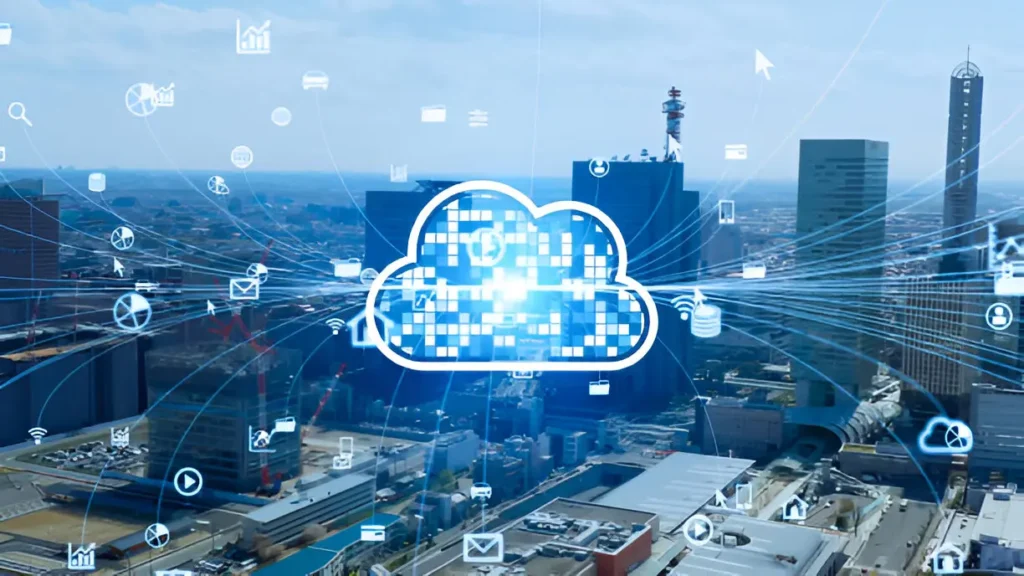As the world grows more urbanized, cities are facing unprecedented challenges—ranging from traffic congestion and energy consumption to waste management and public safety. In response, many are turning to cutting-edge technology and data-driven solutions to become “smart cities.” But what exactly does that mean, and how is the transformation unfolding?
What Is a Smart City?
A smart city leverages advanced digital technologies and robust data systems to streamline services, elevate residents’ quality of life, and promote long-term sustainability. It’s not just about offering public Wi-Fi or enabling mobile payments for parking—it’s about building a digitally integrated ecosystem where infrastructure elements like traffic signals, energy grids, and waste management systems are intelligently connected and responsive.
Central to this transformation are digital infrastructure solutions such as high-speed broadband networks, cloud-based platforms, and interoperable communication systems. These foundational technologies support the seamless deployment of tools like the Internet of Things (IoT), artificial intelligence (AI), big data analytics, and real-time monitoring. By harnessing these innovations, smart cities aim to become more efficient, inclusive, and environmentally conscious—delivering smarter governance, safer communities, and more resilient urban environments.
Key Components of Smart Cities
1. Smart Transportation
One of the first signs that a city is getting “smarter” is its transportation system. Real-time tracking of buses, adaptive traffic signals that respond to flow, and ride-sharing apps all contribute to smoother commutes. Some cities are even implementing smart traffic lights that prioritize emergency vehicles or public transit.
In addition, smart parking systems help drivers find available spots quickly, reducing both frustration and emissions from circling traffic.
2. Sustainable Energy and Environment
Smart cities focus on sustainability through the use of energy-efficient buildings, renewable energy sources, and intelligent energy grids. Smart meters help households and businesses monitor usage, while solar-powered infrastructure and green buildings reduce the environmental footprint.
Cities like Amsterdam and San Diego have introduced energy-efficient street lighting systems that dim or brighten based on the presence of pedestrians or vehicles, saving energy while ensuring safety.
3. Data-Driven Governance
Smart governance means leveraging digital platforms to enhance transparency, citizen engagement, and administrative efficiency. From paying taxes online to participating in public forums via mobile apps, digital tools allow residents to interact with their local governments more easily and effectively.
Open data platforms, where municipal data is publicly available, empower citizens and businesses to innovate and collaborate on civic improvements.
4. Public Safety and Health
Through AI-powered surveillance, predictive policing, and digital emergency response systems, smart cities aim to keep residents safer. For instance, gunshot detection systems can alert authorities in real time, while drones can assist in disaster response.
In the healthcare space, telemedicine, wearable health monitors, and AI-driven diagnostics are increasingly integrated into public health infrastructure, ensuring timely and efficient care.
5. Smart Infrastructure
Infrastructure in a smart city is not only built to last—it’s built to adapt. Sensors embedded in bridges and roads can detect stress and maintenance needs, preventing accidents and costly repairs. Meanwhile, smart water systems monitor usage and detect leaks before they become major issues.
Examples of Smart Cities in Action
Cities around the world are at various stages of becoming smart:
- Singapore has embraced a nationwide Smart Nation initiative, using sensors and cameras to manage traffic, crowd control, and even monitor cleanliness.
- Barcelona utilizes smart lighting, waste collection systems, and IoT-based water management.
- Toronto’s Quayside project (though controversial) aimed to rethink urban design from the ground up, incorporating smart tech at every level.
- Dubai is pushing toward becoming the world’s smartest city with initiatives in AI, blockchain, and autonomous transport.
Challenges Along the Way
Transitioning into a smart city is not without hurdles. Privacy concerns are one of the most significant, as widespread surveillance and data collection raise questions about how information is used and protected. Additionally, there are issues of digital inequality—ensuring all citizens have equal access to smart services.
Infrastructure costs, cybersecurity threats, and resistance to change also pose challenges. Success depends on thoughtful planning, strong partnerships between public and private sectors, and active citizen participation.
The Road Ahead
The journey toward becoming a smart city is gradual and multifaceted. It’s not just about implementing the latest tech but about creating a cohesive and inclusive urban ecosystem that adapts to the needs of its residents.
As cities continue to grow, smart technologies offer promising solutions to age-old problems. But more importantly, they offer the potential to reimagine how urban life functions—with greater sustainability, connectivity, and resilience.
The future is wired—and it’s already taking shape, one sensor, app, and data point at a time.
Also Read-V4Holt: Leading Advances in Innovative Tech


